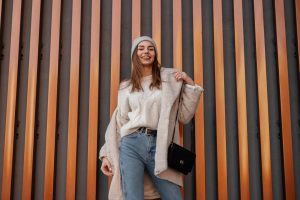
Luxury retail revenue is on pace to reach a new all-time high this year – for the first time since 2019 – with a projected total of $354.81 billion worldwide by Q4 of 2023. However, as luxury spending resumes, it has become increasingly clear to retail service providers that consumer habits and preferences have changed significantly in the intervening years.
In 2022, ecommerce accounted for 22.7% of personal luxury retail sales, having more than doubled in just five years from a meager 9% in 2017. A growing segment of today’s luxury shoppers prefers digital interaction, even in the absence of closures and restrictions.
Additionally, in-store shoppers continue to adopt more digital tools – such as “near me” searches, online reviews, and personalized ecommerce recommendations – to enhance their shopping experiences. To thrive in this new landscape, high-end retail must reimagine its luxury branding strategy and how to tailor a customized luxury client experience to emerging consumer preferences.
Implement these practices to refine your luxury retail experience.
Luxury retailers provide their clients with more than products. They tap into a complex cocktail of emotions and ideas such as clients’:
Traditionally, this has meant that the luxury customer experience has resisted digitalization. Customers prefer to see, touch, and experience products themselves – both to confirm their quality and to enjoy the knowledge and hospitality of sales personnel who develop personal client relationships.
However, retailers who see the difference between digital and face-to-face shopping experiences in black and white risk missing an opportunity to give their clients more of what they really want: personalization. One lesson that businesses across industries have learned in the last few years is that once customers experience ecommerce personalization, they overwhelmingly prefer to keep it as a part of their regular buying experiences.
Recent studies have found that 71% of consumers now expect personalization in their digital shopping experiences, and when they don’t feel it, 76% become frustrated and consider brand alternatives. Consumers have more options in an ecommerce-driven marketplace, and inflation has raised the price tag on products across the board. Even in luxury retail, sellers and brands who neglect digital, personalized engagement with their clients will experience increased churn – both in lost ecommerce sales and missed opportunities to get shoppers in the door.

Of course, digital personalization in luxury retail differs from similar techniques for mainstream marketing. Your luxury clientele doesn’t want their inboxes and social media timelines inundated with a surplus of product recommendations. They want the same quality of curated experience they’ve come to expect from luxury hosts in person. In digital form, this means serving personalized content with the help of cutting-edge immersive technologies such as:

The generational dynamics of the luxury goods marketplace are changing. In 2022, Millennial and Gen Z buyers accounted for 72% of global luxury sales. In any sector of retail, best practices in marketing and branding will reflect the values and preferences of the consumer. As retailers reevaluate their luxury brand strategies, they should consider that:
Green or socially conscious values may seem at odds with luxury brand identity on the surface. After all, manufacturers traditionally design luxury products such as sports cars or haute couture for performance and status symbolism, rather than commitments to communities or the environment. However, there are a few aspects of luxury identity that integrate naturally with ethical consumerism and appeal to Millennial and Gen Z shoppers. Work these concepts into your brand’s messaging and imagery – both online and in-store – to build luxury credibility:
Luxury purchasing and consumption is a form of self-expression. Clients pay for material quality, but they also pay for the sense of projecting an idealized image of themselves. Luxury brands spend a lot of time and resources developing brand identity. However, not all of them realize that their clients want to be a part of that process too.
For an economist, understanding luxury purchasing is a matter of answering the question: Why do some people choose to pay more for goods and services than necessary? While personalized experiences and the satisfaction of value alignment are important parts of the puzzle, luxury retailers and marketers should not forget the value people place on self-expression.
In luxury products, customization provides a powerful medium for client self-expression. When packaged in intuitive and visually compelling self-service features, customization increases average order value (AOV) for luxury sales by 50% and drives conversions by 40%. Opportunities for product customization in popular luxury goods categories include:
For retailers, capitalizing on the allure of customization is more than simply offering clients a catalog of options. You must develop the ability to communicate – through both knowledgeable and passionate staff and effective digital tools – the diverse range of possibilities your luxury services represent.
ConfigureID is a cutting-edge online product personalization platform for luxury retailers. With features for photorealistic 3D product visualization, text personalization, and unique product bundling, ConfigureID allows your clientele to cocreate and design with your brand.
To learn more and schedule a demo, contact ConfigureID today.